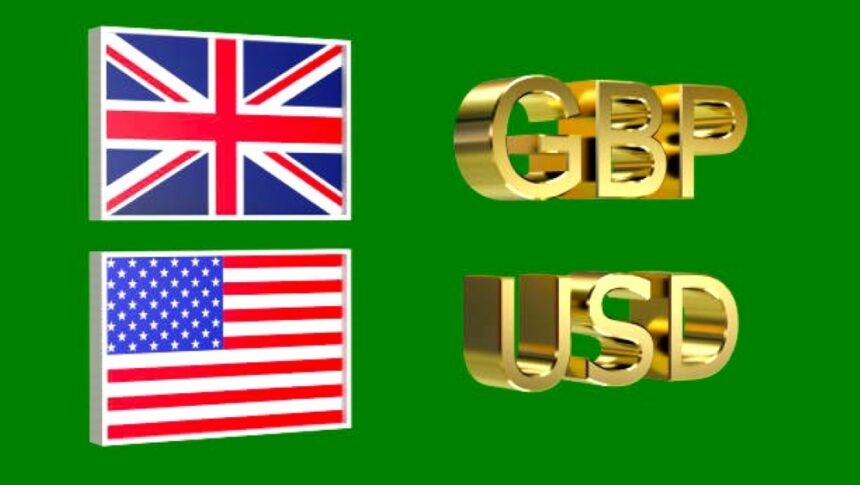Pound Sterling corrects broadly, except against the Greenback, amid diverging economic signals in the UK and US.
The British Pound Sterling (GBP) continues its upward momentum against the US Dollar (USD), edging closer to 1.3330 during the European trading session on Friday. This bullish movement builds on Thursday’s rally, which fueled by a stronger-than-expected economic performance in the UK.
Conversely, the US Dollar remains under pressure following disappointing US Producer Price Index (PPI) and Retail Sales data, which signaled slowing economic momentum. This divergence in macroeconomic performance between the UK and the US has led traders to shift their focus to the upcoming UK inflation data, due next week, for further policy cues from the Bank of England (BoE).
UK GDP Surprise Lifts Pound Sterling Across the Board
On Thursday, the UK released its monthly and quarterly Gross Domestic Product (GDP) figures, which beat market expectations and signaled resilience in the British economy despite global uncertainties. The economy expanded more robustly than economists had forecast, providing reassurance that the UK may avoid a prolonged stagnation or recession.
This positive growth data has strengthened the BoE’s hand in maintaining its current interest rate policy, particularly if inflation continues to be sticky. It also provided the Pound with a fundamental boost, supporting its gains against a basket of major currencies — though Friday’s session saw some correction except against the USD.
Huw Pill Warns of Structural Inflation Pressures
Bank of England Chief Economist Huw Pill expressed concerns earlier in the week about the persistence of inflation in the UK economy. He cited potential structural changes in price and wage-setting behavior, likening them to inflationary dynamics seen in the 1970s and 1980s.
His comments suggest that inflation could remain elevated even as economic growth accelerates, reinforcing the BoE’s cautious approach to interest rate cuts. Pill, alongside fellow Monetary Policy Committee (MPC) member Catherine Mann, was in the minority that voted against the 25 basis point rate cut to 4.25% in the most recent BoE meeting.
UK CPI Data in Focus Ahead of BoE’s June Decision
Investors are now eagerly awaiting the release of April’s UK Consumer Price Index (CPI) data, scheduled for next Wednesday. This data will be instrumental in shaping expectations for the BoE’s next move. A continued decline in inflation would pave the way for further rate reductions, possibly as early as the June policy meeting.
However, if inflation remains stubborn, the BoE could face increased pressure to hold rates steady, despite political and market calls for easing. Current market pricing reflects growing uncertainty about the BoE’s policy trajectory.
US Economic Data Disappoints, Weighs on Dollar
Across the Atlantic, the US economy has shown signs of cooling, as highlighted by the latest PPI and Retail Sales reports. The US Dollar Index (DXY), which measures the value of the USD against six major peers, fell to around 100.50, reflecting broad-based weakness.
April’s Producer Price Index unexpectedly declined, driven largely by a sharp drop in prices within the hospitality sector. Reports suggest that a slump in tourism, particularly international travel to the US, played a significant role. According to Reuters, factors behind the downturn include President Donald Trump’s protectionist trade policies, immigration crackdowns, and controversial comments referring to Canada as the “51st state” and discussing Greenland as a US territory.
Tourism Decline Hurts Hospitality Sector, Drives PPI Lower
The hospitality sector’s weakness translated into lower airline ticket sales, hotel bookings, and overall tourism revenues — all of which contributed to the unexpected dip in PPI. This reflects deeper concerns about the attractiveness of the US as a travel destination under current political rhetoric.
These inflationary pressures, or rather the lack thereof, could have far-reaching implications for US monetary policy, especially if they feed through to consumer prices and wage expectations.
Retail Sales Signal Consumer Spending Fatigue
Retail Sales data further added to the bleak outlook for the USD. April’s reading showed a mere 0.1% rise in overall sales, a sharp deceleration from March’s 1.5% surge. The slowdown was particularly evident in key sectors: auto sales dipped 0.1%, and durable goods posted only a 0.3% increase compared to March’s 1.5%.
Analysts believe that the strong March figures were driven by a preemptive surge in purchases, with consumers bracing for potential tariff hikes under Trump’s trade regime. The April data, therefore, may reflect a natural pullback, but also hints at consumer fatigue.
US Treasury Yields Retreat as Market Reassesses Outlook
The weak economic data triggered a notable decline in US Treasury yields. The benchmark 10-year yield fell sharply from a monthly high of 4.55% to around 4.40% in Friday’s European session. This retreat signals increased market caution about the US growth outlook and reinforces the view that aggressive rate hikes are off the table.
Still, the bond market remains relatively stable, with expectations that the Federal Reserve will maintain its current interest rate stance for at least the next two policy meetings.
Fed Expected to Stay Put Despite Cooling Indicators
Despite mounting evidence of economic softening, the Federal Reserve is not expected to cut rates in the near term. According to the CME FedWatch Tool, there is a 91.8% probability that the Fed will hold its benchmark interest rate steady at 4.25%-4.50% in June. For July, the likelihood of a pause drops slightly to 61.4%, reflecting some expectations of easing if data continues to deteriorate.
The Fed appears more focused on bringing inflation expectations back in line with its long-term target than on responding to near-term growth concerns. As such, soft data alone may not be enough to prompt an imminent policy shift.
Pound Technical Outlook: Bulls in Control
Technically, the Pound remains in a bullish posture, with the pair comfortably trading above the 1.3300 mark. Key resistance lies near 1.3350, a level that could be tested if next week’s UK inflation data comes in below expectations, reinforcing rate cut hopes.
Support is seen around 1.3260, with further downside limited unless the US Dollar stages a meaningful recovery or UK data disappoints sharply.
Conclusion: Pound Sterling Fate Hinges on UK CPI, Fed Stays on Hold
The British Pound’s recent strength reflects not just optimism about the UK economy, but also a broader reassessment of US economic momentum. While the UK’s better-than-expected GDP report provided a short-term boost, the longer-term outlook hinges on inflation trends and the BoE’s response.
Meanwhile, the US Dollar remains under pressure amid signs of consumer fatigue and cooling price pressures. While the Fed not expected to cut rates imminently, markets are clearly watching for signs that the US economy may need support sooner rather than later.
With the UK CPI report just around the corner, the next leg in Pound will likely be driven by inflation data — and the BoE’s reaction to it..
[faq-schema id=”39602″]









